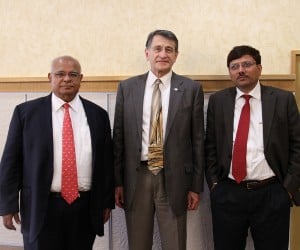Mechanical Engineering – Engineering Mechanics Graduate Seminar: September 13, 2012; 4:00 – 5:00 p.m., Room 112, ME-EM Building
Seminar Flyer
Dr. Chris Cotting, Master Instructor of Flying Qualities, U. S. Air Force Test Pilot School
Dr. Chris Cotting is the Master Instructor of Flying Qualities at the U. S. Air Force Test Pilot School in Southern California, where he is responsible for the aircraft dynamics, control, and handling qualities curriculum. He received a PhD in Aerospace Engineering from Virginia Polytechnic Institute and State University in May of 2010, and has also earned a B. S. and M. S. in Aerospace Engineering from Mississippi State University. He is the recipient of three Project Achievement Awards from the Engineers Council Inc., the BAE Chairman’s Award for Innovation, and the Robert L. Wenning Outstanding Academic Instructor Award at USAF TPS. He was awarded the Best Paper in Atmospheric Flight Mechanics at the 43rd AIAA Aerospace Sciences Meeting (2005). He is a member of the AIAA Atmospheric Flight Mechanics Technical Committee. Dr. Cotting previously worked for NASA Dryden Flight Research Center as a Project Chief Engineer on both piloted and unpiloted aircraft. He also served as the X-43C chief of flight test and nonlinear control analysis lead for the X-43A Mishap Investigation Board. Before joining NASA, he worked at the Lockheed Martin Skunk Works on the X-33 (SSTO) and X-35 (JSF) programs. His research interests include handling qualities of piloted and unpiloted aircraft, as well as flying qualities analysis of aircraft nonlinear control systems.
An Overview of the USAF Test Pilot School, and A Framework for UAV Flying Qualities
The USAF Test Pilot School teaches flight test engineering with both a theoretical and applied approach. Our mission is to “Produce highly-adaptive, critical-thinking flight test professionals and future senior leaders to lead and conduct full-spectrum test and evaluation of aerospace weapon systems.” This seminar will introduce the Test Pilot School and research opportunities at Test Pilot School. This seminar will also discuss current topics in aircraft flying qualities. Flying qualities metrics were originally created to standardize and predict the performance of the human/aircraft system for a given task. As UAVs have become widely used, tools to predict their performance are also required. A discussion of whether or not piloted standards are applicable to UAVs will be presented as well as a framework for creating new UAV standards.
Dr. Chris Cotting is the Master Instructor of Flying Qualities at the U. S. Air Force Test Pilot School in Southern California, where he is responsible for the aircraft dynamics, control, and handling qualities curriculum. He received a PhD in Aerospace Engineering from Virginia Polytechnic Institute and State University in May of 2010, and has also earned a B. S. and M. S. in Aerospace Engineering from Mississippi State University. He is the recipient of three Project Achievement Awards from the Engineers Council Inc., the BAE Chairman’s Award for Innovation, and the Robert L. Wenning Outstanding Academic Instructor Award at USAF TPS. He was awarded the Best Paper in Atmospheric Flight Mechanics at the 43rd AIAA Aerospace Sciences Meeting (2005). He is a member of the AIAA Atmospheric Flight Mechanics Technical Committee. Dr. Cotting previously worked for NASA Dryden Flight Research Center as a Project Chief Engineer on both piloted and unpiloted aircraft. He also served as the X-43C chief of flight test and nonlinear control analysis lead for the X-43A Mishap Investigation Board. Before joining NASA, he worked at the Lockheed Martin Skunk Works on the X-33 (SSTO) and X-35 (JSF) programs. His research interests include handling qualities of piloted and unpiloted aircraft, as well as flying qualities analysis of aircraft nonlinear control systems.
Topic: An Overview of the USAF Test Pilot School, and A Framework for UAV Flying Qualities
The USAF Test Pilot School teaches flight test engineering with both a theoretical and applied approach. Our mission is to “Produce highly-adaptive, critical-thinking flight test professionals and future senior leaders to lead and conduct full-spectrum test and evaluation of aerospace weapon systems.” This seminar will introduce the Test Pilot School and research opportunities at Test Pilot School. This seminar will also discuss current topics in aircraft flying qualities. Flying qualities metrics were originally created to standardize and predict the performance of the human/aircraft system for a given task. As UAVs have become widely used, tools to predict their performance are also required. A discussion of whether or not piloted standards are applicable to UAVs will be presented as well as a framework for creating new UAV standards.
